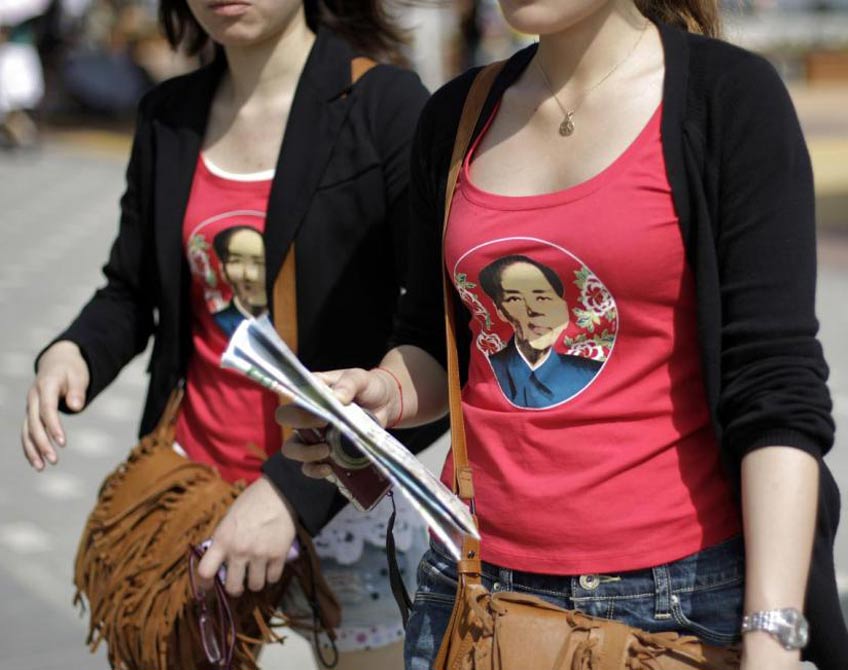They started a Facebook page to petition against new Member of Parliament (MP) Tin Pei Ling after the 2011 General Election.
The page allegedly went on to garner 60,000 likes, inspiring Yang Kaiheng and his then-girlfriend, Ai Takagi, to start an online business.
Yesterday, Yang, who is on trial for sedition, testified that he and Takagi were buoyed by the large following and decided that online space was a useful venue to make money.
"We thought a website without censorship and more freedom of speech (would be) a good business venture for us," he said.
From there, the idea for socio-political website The Real Singapore (TRS) was born.
The couple, who got married last October, were charged last April with posting seven seditious articles on the TRS website and its Facebook page. (See report above.)
Deputy Public Prosecutor G. Kannan said the couple had exploited racist and xenophobic fault lines through their seditious articles, some of which were allegedly fabricated, to drive traffic to the site and cash in on advertising revenue.
Takagi, 23, an Australian national of Japanese descent believed to be 10 weeks pregnant, was jailed for 10 months on March 23 after pleading guilty to four counts of sedition.
Yang, 27, a Singaporean, claimed trial. He took the stand for the first time yesterday and told the court that the idea for TRS did not come "naturally".
He added they first came up with a Facebook page, titled "Petition to remove Tin Pei Ling as a MP", in 2011.
At that time, they were students at the University of Queensland in Brisbane, Australia.
Yang said the Tin Pei Ling Facebook page had 60,000 likes at one point. It was still active yesterday, and a check revealed its first post was on May 8, 2011, a day after polling day in which Ms Tin's People's Action Party team won the Marine Parade group representation constituency.
Inspired by the page's large following, they went on to create the TRS Facebook page and website.
Yang earlier told the authorities that his involvement was "fleeting" - just a month in 2012, said DPP Kannan.
He also told the police his involvement in TRS was only in the advertising aspects.
Yesterday, Yang testified he was initially involved in designing the website, its headers and its logo.
REVENUE
Yang also said he learnt from his friends on how to earn advertising revenue through Google Adsense, which later paid TRS almost half a million dollars between December 2013 and April 2015.
He suggested using Google Adsense to Takagi, who he claimed was involved in the publishing of content, liaising with advertisers, engaging the editorial team and running the day-to-day business of TRS.
He added that Google even sent its staff members to meet Takagi and invited her to a meeting in Sydney.
The TRS Facebook page was eventually created in June 2012, but Yang said he stopped being active with TRS soon after that, claiming he was busy with schoolwork and his university's gaming club that he set up.
He helped Takagi out on an ad hoc basis - occasionally assisting her with the TRS mobile app and giving feedback. He denied having any role in the writing or editing of the articles.
Earlier yesterday, DPP Kannan closed the prosecution's case by saying there was prima facie proof that Yang had published the seditious publications, as evidenced by the chat logs tendered to the court.
He also pointed out Yang was one of two directors of the company who received significant advertising revenue for TRS and had a case to answer.
District Judge Ng Peng Hong said the evidence tendered so far was "not inherently incredible" and called for Yang to give evidence in his defence.
Yesterday's hearing was adjourned after just 20 minutes as the court allowed Yang to take time off to accompany his wife following Tuesday's "medical emergency" linked to her pregnancy.
The trial continues today.
If found guilty, Yang can be jailed up to three years and fined up to $5,000 for each sedition charge.
rloh@sph.com.sg

This article was first published on April 7, 2016.
Get The New Paper for more stories.






























































































































































